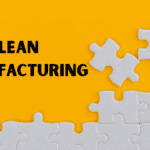
Top Strategies for Lean Process Improvement: Achieve Operational Excellence
Spis treści
Lean Process Improvement: Eliminating Waste and Maximizing Efficiency
Lean process improvement eliminates waste, maximizes efficiency, and delivers greater customer value by streamlining internal and business processes. Rooted in the Toyota Production System, lean thinking has transformed industries by emphasizing customer needs, optimizing workflows, fostering a culture of continuous improvement, and building a continuous improvement culture. In this guide, you’ll explore the core principles of lean, essential tools like 5S, and actionable strategies for implementation. Plus, we’ll highlight real-world applications and show how engaging your team is key to sustained success across various industries.
Understanding Lean Process Improvement
Lean process improvement focuses on identifying and removing non-value-added activities to streamline operations and improve customer satisfaction. Organizations can achieve greater efficiency and support continuous improvement by optimizing operational and work processes. Organizations can reduce costs, improve quality, and enhance responsiveness by optimizing processes and eliminating waste. Developing process improvement is an ongoing effort that helps organizations continually enhance efficiency and eliminate waste. The core idea is simple: deliver value to the customer as quickly and efficiently as possible. Lean also helps identify opportunities for enhancement by analyzing ongoing and completed projects.
One essential aspect of lean is problem-solving. Learning how to tackle root causes effectively is critical for success. For step-by-step methods, explore the Problem-Solving Process course.
Core Principles of Lean Thinking
The five key principles of lean methodology are:
- Define value from the customer’s perspective.
- Map the value stream to identify and eliminate waste.
- Create a continuous flow.
- Establish pull based on demand.
- Pursue continuous improvement.
These key principles form the foundation of lean methodology, guiding organizations to minimize waste, improve processes, and achieve operational excellence.
Each principle contributes to a culture where teams are empowered to drive improvements daily. If you’re interested in embedding continuous improvement into your organization’s DNA, this Continuous Improvement course offers practical strategies and tools to get started.
The Role of Waste Elimination in Lean
Eliminating waste is at the heart of lean. By focusing on value-added activities and removing unnecessary processes, organizations can improve efficiency by eliminating wasteful activities such as the excess use of raw materials in production processes. Improving efficiency and reducing costs also depend on reducing waste and prioritizing waste reduction, which are crucial for operational success. This approach is supported by tools like 5S, which help identify and eliminate wasteful activities throughout production processes, ensuring a clean, organized, and safe workspace. For a hands-on guide to implementing 5S effectively, enroll in The Fundamentals of 5S course.
Lean Tools and Techniques
A successful lean transformation depends on practical and valuable tools, including:
- Value Stream Mapping for visualizing workflows.
- Kanban systems for managing production flow.
- 5S for workplace organization.
- WIP Limits for controlling in-progress work.
- Sigma and statistical tools are used in lean processes to analyze data, reduce defects, and optimize efficiency.
Through these valuable tools and techniques, Lean focuses on continuous improvement and waste reduction.
Beyond tools, fostering a collaborative environment is key. Consider the Effective Teamwork and Leadership course to strengthen leadership and teamwork within your lean initiatives.
Benefits of Lean Process Improvement
Lean delivers measurable improvements and significant benefits across industries:
- Increased operational efficiency by reducing delays and waste, enhancing efficiency at every step.
- Increased customer satisfaction through faster delivery and better quality.
- Lower operating costs by optimizing resources.
Lean methodologies drive meaningful and sustainable improvements in organizational performance.
These results are achieved by combining lean tools, teamwork, and problem-solving skills. To learn how to analyze problems effectively, consider the Problem-Solving Process course.
Steps to Implement Lean Process Improvement
Implementing lean requires a structured approach:
- Identify Improvement Opportunities: Analyze workflows and customer feedback.
- Develop and Test Solutions: Use root cause analysis, brainstorming, and pilot projects, then implement solutions for process improvement.
- Monitor and Standardize: Apply control charts and checklists to sustain results.
Successful implementation of Lean requires engaging in a continuous improvement cycle, ensuring that changes are adopted and integrated into daily operations.
A culture of continuous improvement is essential to maintaining momentum. Continuous improvement efforts are needed to achieve and build this culture. For actionable steps on embedding continuous improvement, visit the Continuous Improvement course.
Building a Culture of Continuous Improvement
Sustainable lean transformations require a strong culture that values feedback, collaboration, and learning. Teams that share ownership of processes and feel empowered to make changes are more likely to succeed. Lean organizations foster a culture of continuous improvement and often integrate lean and Six Sigma approaches to maximize efficiency and quality. Strengthen your team’s ability to lead change with the Effective Teamwork and Leadership course.
Lean Six Sigma provides a systematic approach to process improvement by combining Lean and Six Sigma methodologies to eliminate waste, reduce defects, and drive continuous improvement. The value of Lean Six Sigma is further enhanced by Lean Six Sigma certification, Lean Six Sigma training, and Lean Six Sigma consulting, which are essential for developing process improvement leaders who can lead projects, improve quality, and enhance organizational efficiency across industries.
Engaging employees in the 5S methodology is a great way to start. Explore the Fundamentals of 5S course to learn how to get your team involved.
Real-World Applications of Lean Process Improvement
Lean principles have been successfully applied across diverse industries:
- Lean optimizes material flow, improves manufacturing processes, drives process improvements, and reduces process defects to enhance production quality.
- In healthcare, lean streamlines patient flow, reduces wait times, and helps meet customer demand and customer expectations for timely, high-quality care.
- In services, lean enhances customer interactions, improves products and services, and optimizes business operations and operational processes for better overall performance.
Organizations use a systematic approach to streamline processes, identify opportunities, and exceed customer expectations.
Lean process improvement methodology and Lean Six Sigma’s application in various industries help identify opportunities for improvement and achieve operational excellence.
Learning to manage lean initiatives is critical regardless of the industry. The Lean Management course equips professionals with the practical skills to lead lean transformations.
Overcoming Common Challenges
Resistance to change is a frequent obstacle in lean transformations. To overcome this, leaders must communicate the benefits, involve employees, and provide the necessary training. Tools like the Problem-Solving Process course can equip teams with methods to tackle challenges as they arise.
Maintaining momentum is another challenge. Embedding a culture of continuous improvement requires discipline, structure, and a commitment to learning. For long-term success, consider combining the Continuous Improvement course with team development resources like the Teamwork and Leadership course.
Final Thoughts: Start Your Lean Journey Today
Lean process improvement is more than a methodology—a mindset that continually drives organizations to seek better working methods. Organizations can achieve operational excellence by mastering tools like 5S, building strong teams, applying effective problem-solving techniques, and fostering a culture of continuous improvement.
🎓 Ready to elevate your lean capabilities? Explore the full range of practical courses available at Sabat Consulting:
- Lean Management course
- Problem-Solving Process course
- The Fundamentals of 5S
- Continuous Improvement course
- Effective Teamwork and Leadership course
For an interactive experience, try the GET LEAN Simulation Game—a dynamic way to reinforce learning through real-world scenarios.
Start your lean journey today and unlock the full potential of your organization!


